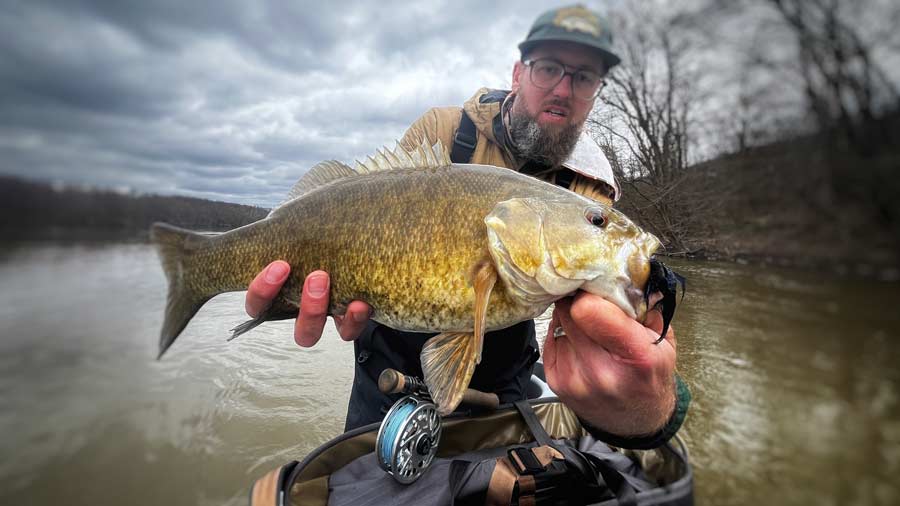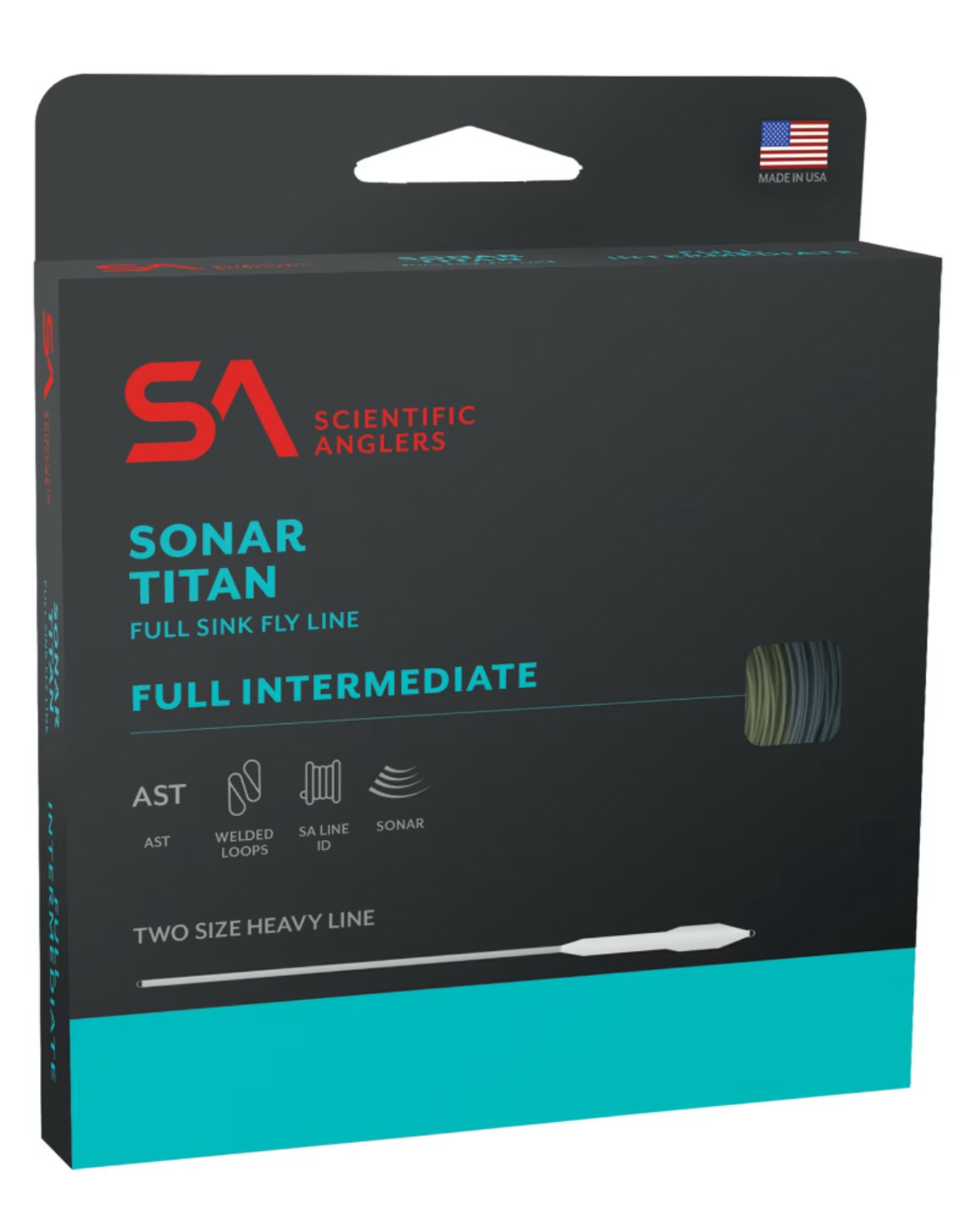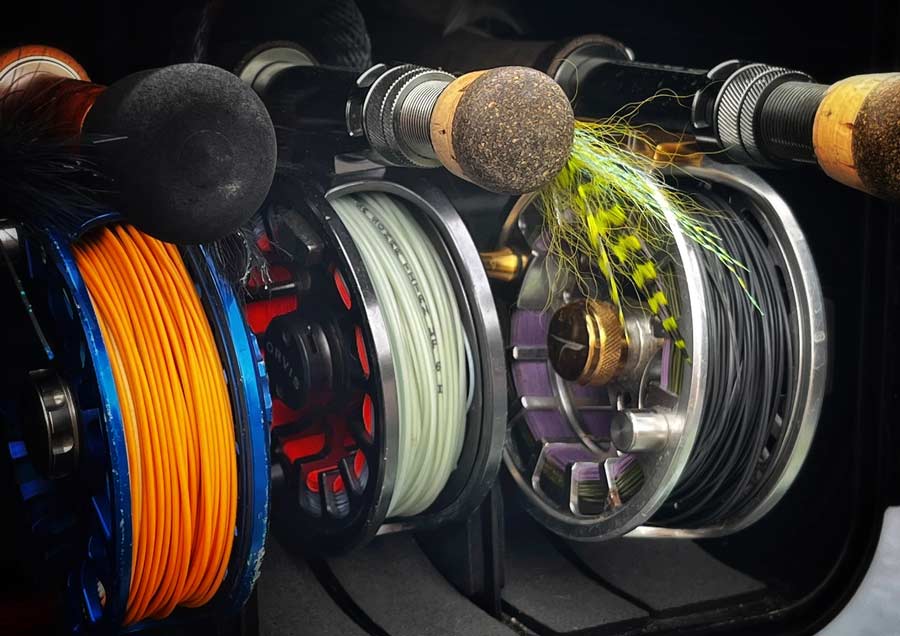MidCurrent Tested & Trusted: Scientific Anglers Sonar Titan Full Intermediate Fly Line

The author with a gorgeous Pennsylvania smallie caught using the Titan Full Intermediate line. Photo: Rick Mikesell
A full intermediate fly line is the most versatile tool you can have for streamer fishing in still water. It’s equally useful in moving water under the right conditions, but for crawling, stripping, twitching, or burning streamers across a lake, it can do it all. The Scientific Anglers Sonar Titan Full Intermediate has been my preferred choice for this style of fishing for the past few years.
Built to Deliver
The Titan Full Intermediate features a short, stout head with a notably overweighted taper, almost two full sizes heavier. It punches into the wind, turns over tandem rigs with ease, and launches big flies with authority. When long leaders and heavy patterns are part of the program, this line excels.
I’ve fished the 6- and 8-weight versions on fast-action rods like the G. Loomis IMX-Pro, NRX, and Asquith. These are stout rods built for power, and they pair well with this line. Whether it’s contending with wind, pushing large flies, or making a long cast to cover more water, this setup delivers the muscle needed. With the right rod, the Titan loads quickly, casts cleanly, and gives you the confidence to fish aggressively in less than ideal conditions.

The performs especially well on large lakes, although in cold weather, you may need to stretch it to remove memory. Photo: Rick Mikesell
Stillwater Presentation
In lakes, a go-to presentation is an opposing-buoyancy tandem rig: a weighted fly tied off a tag end with a triple surgeon’s knot, followed by a second fly that is neutrally or slightly buoyant. When paused between strips, the lead fly sinks and the trailer rises. This creates a vertical separation that often triggers strikes from hesitant fish. It’s been especially productive for Colorado walleye that typically need a little extra convincing. That subtle rise-and-drop motion can make all the difference. The Titan Intermediate is ideal at delivering these presentations and keeping the flies in the zone, where they need to be.
Controlled Depth without Snags
The Titan’s intermediate sink rate—1.25 inches per second—offers a nice balance of depth and control. It allows for steady, repeatable countdowns without the frequent hang-ups that come with faster-sinking lines. It fishes cleanly over submerged weeds, riprap, and complex structure where other lines often snag up. You can work it confidently in 8 to 10 feet of water, if you’re patient. For species that suspend or eat up—such as pike, wiper, and walleye—it consistently puts the fly in the zone.
On Colorado’s sagebrush lakes, which often top out around 15 feet deep, this line shines for twitching leeches and smaller streamers. The aggressive head helps deliver longer leaders needed for this approach and cuts through the ever-present wind. Even with limited room for a backcast, it shoots well and stays on track.

Feel Everything. Set Everything.
The braided core offers impressive sensitivity. Subtle grabs come through clearly, even at distance, and the line transmits enough energy to drive solid hook sets. Since switching to this line, I’ve missed fewer fish and felt more confident in how the fly is tracking and swimming.
The AST coating is slick and durable. The line shoots effortlessly, even when limited by backcast space. Combined with the compact head, it makes for efficient, accurate casting. After a few years of abuse—being stepped on in boats, dragged across rocks, and run through grit—it has shown no cracking, splitting, or visible damage. Scientific Anglers’ coatings have consistently proven to be among the most durable on the market.
The translucent blue color adds to its fishability. It’s visible enough to track in the water, but subtle enough not to spook fish in clear or pressured conditions.
On the River, Too
This line isn’t limited to still water. On a spring trip to Pennsylvania for smallmouth, it handled slow-moving, wide rivers with ease. We were targeting sluggish pre-spawn fish holding in deeper troughs. The Titan laid out Jake Villwock’s heavy smallmouth patterns, and got them down in the buckets where fish were holding. The intermediate rate allowed for some strategic mends that helped the fly drop into the slot without skating out of the holding water. It held a straight connection in soft currents and avoided the drag issues that plague faster sink-tips in that kind of water.

The Titan Full Intermediate perfectly fills the slot between your floating and full-sinking lines. Photo: Rick Mikesell
A Couple Notes
In colder conditions, the line can carry a bit of memory. It’s not a major issue—usually a quick stretch is all it takes to smooth things out—but it’s something to be aware of if you’re fishing in freezing temps. Occasionally, a knot or coil might jam up your next cast.
It’s also worth noting that Scientific Anglers doesn’t include hang markers on this line. For stillwater anglers who rely on the hang to finish a retrieve, it’s a detail that would be nice to have. That said, adding your own with heat-shrink tubing or a UV resin is fairly easy, and a small tweak for an otherwise dialed-in line.
A Line That Delivers
For anglers who fish streamers in lakes, reservoirs, or slower rivers, the Sonar Titan Full Intermediate stands out. It handles wind, loads easily, and keeps flies in the strike zone longer. The durability is exceptional, and the line pairs well with modern fast-action rods designed for heavy flies and long casts.
It’s a workhorse that’s versatile, dependable, and fishable across a range of scenarios. Whether you’re targeting trout on big lakes, tracking walleye through weed edges, or probing mid-depth pockets for warmwater species, this line continues to prove itself trip after trip.











